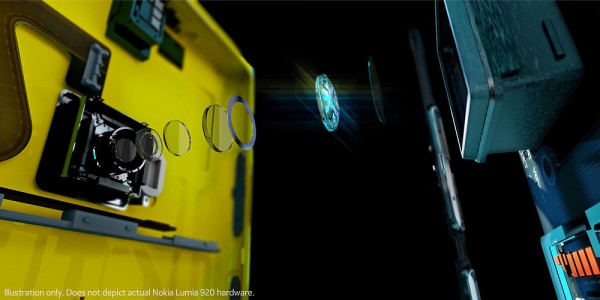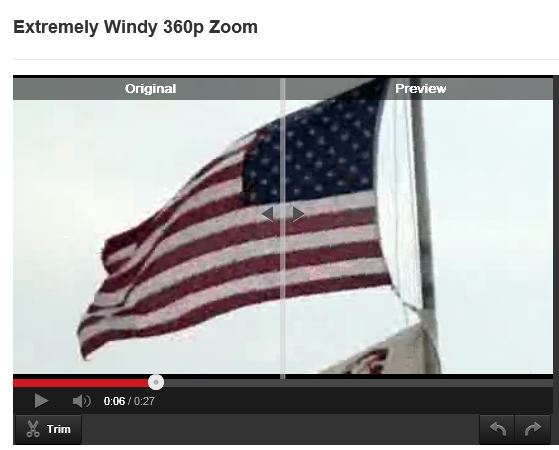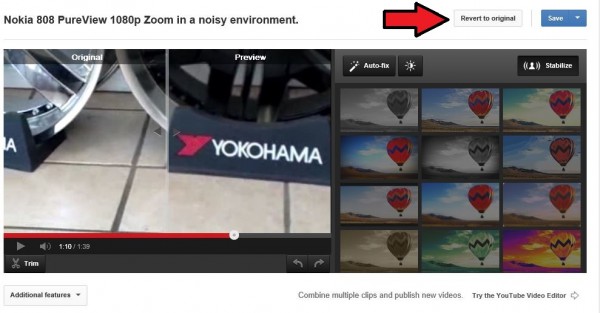Weekend Watch: Dreaming of 41MPs, 1080p, OIS video goodness? Try YouTube’s Video Stabilzation!
Hello MNB readers!
We all know how revolutionary the 41MP Sensor, Carl Zeiss lens and PureView algorithms are in the 808 but there is still an obvious area of improvement: Image Stabilization. More specifically, Optical Image Stabilization, or OIS, where the actual optics are stabilized by the hardware. The Lumia 920 was the first phone to have OIS followed by the HTC One with a technically different implementation of OIS and unfortunately the 808 PureView does not have OIS at all. Alternatively, the 808 PureVeiw relies on Digital Image Stabilization (DIS).
Digital Image Stabilization is completely software based and usually affects the original image, by cropping and/or using other software enhancements. I won’t go to deep into the technical areas or differences as I am no expert on the matter but I do know that most of us are hoping for a 41MP+OIS= PureView Phase 3 (Lumia 920s OIS was Phase 2, Nokia 808 41MP and large optics was Phase 1). Click here (pdf file)to see a detailed explanation of the current PureView phases.
What can we do about the lack of OIS in the 808? Nothing on the hardware side as far as the 808 itself is concerned. You can always use external stability enhancers like tripods, dollies, and other steady cam utilities IF you have the equipment available.
If you do not have the equipment, you can use various software programs on a computer to stabilize your videos but most of those cost money which brings me to…
YouTube’s Video Stabilization Enhancement! (VSE)
You can use YouTube’s free Video Stabilization Enhancement either when uploading a video or after a video has been uploaded. Simply go to your Video Manager, click the video you would like to Edit and the top, click on Enhancements. Once you get to the enhancement screen above, click the Stabilize icon on the right. You will then get a dual screen preview as shown below:
The preview video is horribly pixellated and does not represent the final output quality. Fortunately, after several minutes of processing, you get a perfectly stabilized video at your original resolution! The only downside with almost all digital image stabilization is that it affects the viewing area of your video with software cropping and other processes, slightly altering your original video. For example, the video of the snowy night that I recorded with the 808 has the purple pixel defect area in the lower left corner, I used the VSE and it cropped that area almost completely out of the video. Great? Not in this instance, I need that defective area to be seen as proof of the defect! :) Which leads me to another great thing about the YouTube Video Stabilization Enhancement (that’s a mouthful..)…
You can Revert back to your original, non-OIS, non-VSE, held it as steady as humanly possible but the earth still moves, still slightly shaky original video at any time!
Reverting to your original video takes processing time as well but once finished, you will have regained any loss of viewing area that was trimmed away by YouTube’s enhancements via your original video file. I am glad they have this option as there may be a person or object in a scene that you need people to see, even if it is shaky. Take a look at the end results below. The stabilization works very well without a major hit to the quality of the video.
If possible, please view the video in full screen and at 1080p and imagine video this stable with the high bit rate, oversampling and stereo Rich Recording of the 808 PureView, available on your device at every moment.
YouTube Video Link
Well, hopefully I explained it well enough and did justice to the topic in my limited use. I am generally not the one to edit my photos or videos with any sort of post-processing as I like the pure, original content so people can see memories as they really were. I can’t wait until Nokia provides us with a mind-blowing high megapixel PureView with OIS and lossless zoom goodies. If Nokia can deliver this to the masses in an affordable, trendy, and highly desirable (acceptable size, weight and form factor) device in the near future, good times are ahead, not just for us, but for Nokia as well. Until then, YouTube’s Video Stabilization and some of the other options briefly mentioned will have to suffice.
What is your opinion on Image Stabilization, whether Optical or Digital? How about post-processing like what was presented above? If you do post process, what software do you use? Comments and suggestions are welcome as always!
Thank you all for your time and I hope we all have a great week ahead!
Deaconclgi
Category: Lumia, Nokia, Symbian, Video, Windows Phone









Connect
Connect with us on the following social media platforms.